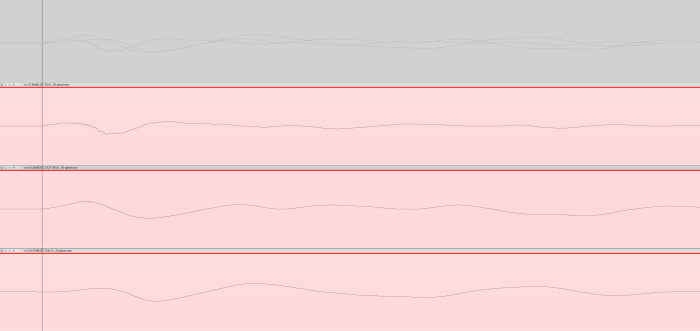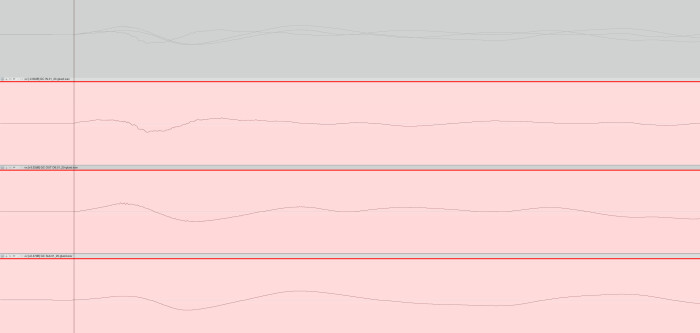Second kick drum installment from the chapter dedicated to recording drums.
Perfect threesome
Last week I left you some homework: to explore the possibilities you can get by mixing the Kick In, Kick Out and Kick Sub mics. But I told you to beware of the traps… I expect all of you to have noticed how I intentionally turned a blind eye on the “nice” phase inversion on the Kick Out Chorus clip. But that wasn’t everything… Actually if you were paying close attention you should have also realized that, besides this 180-degree inversion, there was a small offset between the waveforms!
Let’s focus for a moment on the recordings labeled “Verse.” If you make a zoom on the three waveforms you’ll see this:
As you can see, strictly speaking there are no phase inversion issues. However, the waveforms don’t really match. The result, in gray, is logically quite a jumble, which your ears will hear as this:

Granted, it’s not catastrophic, but after having put so much effort into using different mics and tracks on your audio interface, it would be a shame to settle for this.
If you were to align the Kick Sub with the Kick Out with a simple and quick editing, as illustrated by the image below, you would get the following:

It sounds much less like “cardboardy, ” doesn’t it? But you can obviously achieve much more and gain some attack and dynamics. According to the previous image, all three waveforms are perfectly aligned. But if you analyze carefully the resulting waveform (in gray), you’ll see that there’s a big offset between the dips/bumps of the Kick In signal and the other two. Without going into the details, it’s good to know that this phenomenon is pretty normal since the three mics focus on different frequency zones of the bass drum: Kick In on the attack, Kick Out on the mids and lows, and Kick Sub on the deep lows. To benefit from an optimal mix of these three signals, you might want to perfectly align the first dips/bumps cycle, as you can see in the image below:
This will sound like this:

Notice how the kick regains lots of energy while at the same time having a well-defined/precise attack and much more interesting dynamics!
This can and actually should have been solved during tracking by playing with the position of each of the mics. But, as important as they are, sometimes it’s hard to notice such things during recording. It would be enough if you can make sure that there are no phase inversion issues. As for the rest, correcting the misalignment of the tracks won’t take you longer than a couple of minutes during the editing stage – as long as you are mindful of and listen carefully to this small detail. Once you’ve done this, you’ll really be able realize all the possibilities the mix of these three tracks has to offer in terms of sound, and all without the need of a single plug-in! Isn’t life beautiful?
Download the audio clips (in FLAC format)





